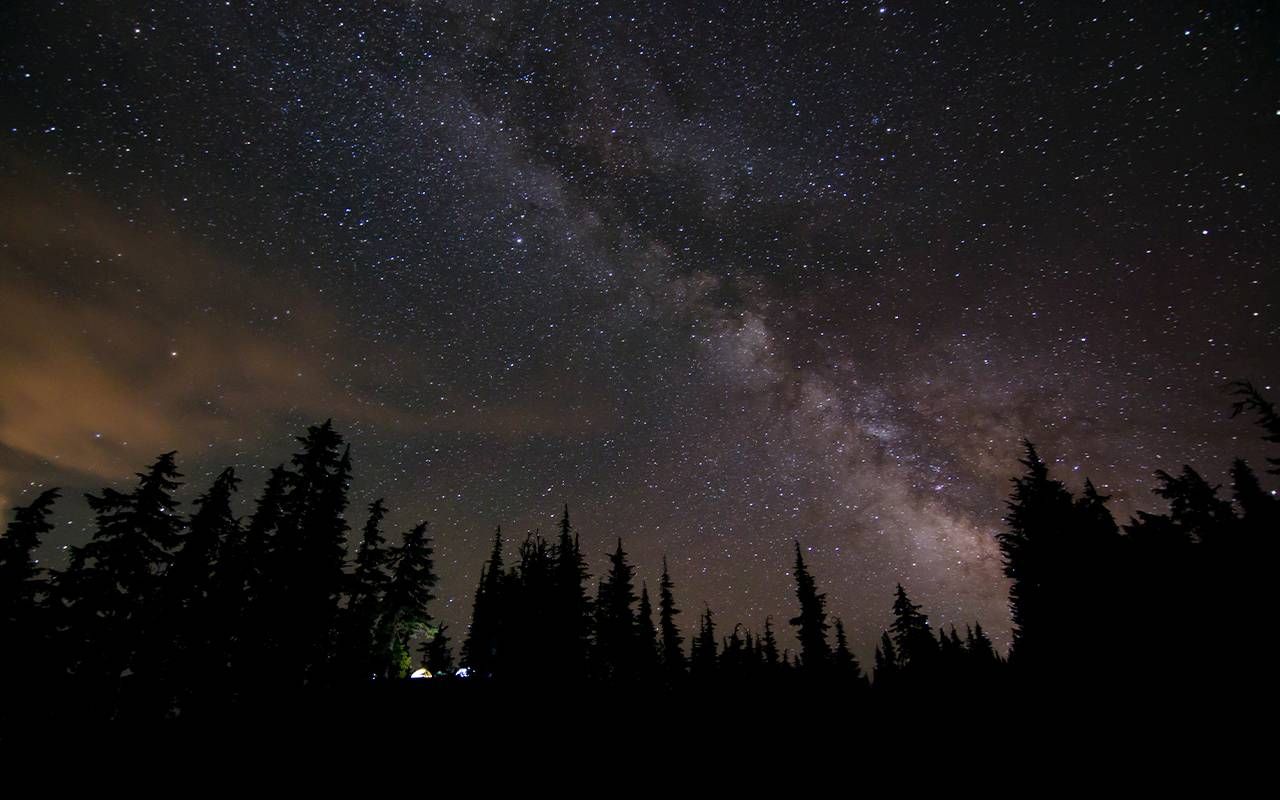Why Dark Skies Matter
With impacts on migratory patterns and human health, reducing light pollution and engagement with the dark skies also offer connection to the natural world
Lying on my back in the darkness of the Montana prairie, the stars seemingly encompassed me. With no glare from homes or towns, the line blurred between earth and the cosmos, and not to sound like a cliché motivational poster, it truly felt as if I could touch the stars.

I'm spoiled living where I do because experiencing novalunosis, defined as the state of relaxation and wonderment experienced while gazing upon the stars, is a rarity for many. Fewer than 80% of United States residents ever see the Milky Way, and with a 2% increase of light pollution encroaching more every year, each generation sees less of the dark skies of our ancestors.
It's the one universal factor that spans the history of humanity, no matter our origins, but we're at risk of losing it completely.
The Significance of Night
"Dark skies are important for a lot of reasons. It's not just the novelty of seeing the stars and the Milky Way," explained Michael Rymer of the International Dark Sky Association (IDA). "Birds, bats and a lot of pollinators are dependent upon night skies for navigation. If we interrupt the natural order of migratory patterns, we do ourselves a disservice."
"Dark skies are important for a lot of reasons. It's not just the novelty of seeing the stars and the Milky Way."
Artificial lights illuminating the horizon can make migrating birds think it's still daylight, causing them to fly farther than they should for the day and potentially deplete precious energy reserves. Events, such as the 'Lights Out' initiative in New York, which schedule state buildings to turn off non-essential outdoor lighting at night and encourage others to do the same, reduce interference with migrating birds. Similar measures are enacted in other parts of the country to help sea turtles find their way back to the oceans.
Light pollution is particularly concerning when it comes to certain bats, particularly the little brown bat, which is already a species of concern, because they avoid lighted areas and this cuts their feeding capabilities. We often sit on the picnic table counting the bats flying from the nearby trees. Understanding their importance in the ecosystem and remembering buggy summer evenings makes this particularly troubling news.
Humans are also not immune from the effect of bright nights. Studies indicate that disrupting the natural day and night cycles with artificial light affects our melatonin production, and subsequently, circadian rhythm. The ripple effect impacts our sleep, our immune and endocrine systems, and results in increased risks of depression, diabetes and breast cancer.
It's no surprise some experts recommend camping away from the glittering lights of civilization to reset our systems.
It's no surprise some experts recommend camping away from the glittering lights of civilization to reset our systems. Studies indicate as few as two nights immersed in the light and dark cycles increases melatonin levels and improves sleep, making a weekend camping trip an excellent remedy for a stressful week.
Darkening the Night
The good news is mitigating light pollution doesn't require the same level of involvement as cleaning up chemical contamination or remediating mine sites to fix the issue.
"Light pollution is the only pollution that can be solved at the speed of light. It requires just a flip of the switch," said Rymer
Because my family cherishes our time sprawled out on a blanket in the backyard during a summer night or even dashing out in the snow to watch the northern lights dance above our heads, doing what we can is of personal importance.
Instead of an all-night security light, we have motion lights that illuminate around the doors or near the vehicles. And I have to agree with Rymer when, as he pointed out, "If all of a sudden I see my light come on, I pay better attention."
Turn Down the Brightness
Rymer offered additional advice about how to reduce our night impact. "You can make a huge difference at your home," he said. "If it's not a useful light, just turn it off. It's being a good neighbor."
"When we look at it from an economical perspective, a lot of energy is used to light our world," he said. "We do not necessarily want the ground to be dark, too."
Safety is the primary concern, but there's no need to shine light on power lines or trees. He recommended shielding and directing the light downward to illuminate critical areas without allowing the light to escape into the night.
Our eyes readily adjust to different light levels, and we don't have to use the brightest bulbs to light our way.
Another thing to consider is turning down the brightness whenever possible. Our eyes readily adjust to different light levels, and we don't have to use the brightest bulbs to light our way.
Color synthesis also plays a big role in how light is perceived. According to Rymer, "Warmer colors have a lower light temperature. Warm amber is better for us and wildlife." He noted that bright LEDs, the ones that seemingly peer into your soul, register as a cool bright blue and prove the most problematic when it comes to disrupting our circadian rhythm.
"The only blue light our eyes can distinguish and take in is natural light from the sun," he said.
And, like the motion lights, Rymer recommended utilizing dimmers and timers to reduce overall usage and intensity. "It's environmentally friendly at every step of the way," he noted.
Once your own home is in order, it's time to spread the word with small business, HOAs (Home Owners' Associations) and policy makers in your area. Small steps make a large impact, but it takes time for people to realize the benefits on the economic and environmental stages.
Find Your Dark Skies
Looking at a night sky map produced by NASA it's easy to see why avoiding light pollution is elusive, but the map is also a guide to discover where to experience a dark sky in all its wonder. Another source is the International Dark-Sky Association (IDA) as an internationally recognized steward of the night skies, which offers official designations for areas that meet their stringent guidelines.
In our region, Waterton-Glacier International Peace Park recently became the first IDA dark sky designation to straddle national boundaries. Glacier's astronomy program includes the almost nightly star parties at the St. Mary Visitor Center where the Dusty Star observatory and hands-on telescopes wow visitors. Throughout the country, many national and state parks are sound choices for dark skies, and state tourism boards often feature out-of-the-way locations for dark sky enthusiasts.
The night sky is our ancient guidance system, a touchstone to our commonality and an ancient relationship with our Mother Earth.
Looking at the night sky map, eastern Montana features large swaths of blackness where only small towns sporadically dot the landscape. This is one reason I appreciate the American Prairie, a private organization formed to preserve the ever-diminishing grasslands in one of the largest land preserves in the country. Their Wild Sky initiative is part of their focus on protecting the night sky, as well as the landscape. The good news is as awareness increases, more parks throughout the country are stepping up to meet the dark sky requirements and provide opportunities for visitors.
Gazing at the night sky, stories millenniums old speak to us. We meet familiar stars, planets and even constellations as we connect with our sense of place."I think there's a spiritual connection with the natural world," said Rymer.
I have to agree. The night sky is our ancient guidance system, a touchstone to our commonality and an ancient relationship with our Mother Earth. Yet, as stars fade out of sight, it's time to protect our dark skies so future generations may experience this same sense of awe.


